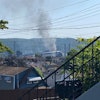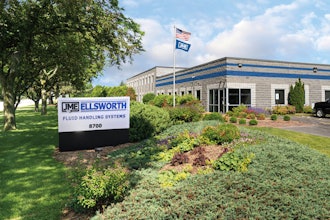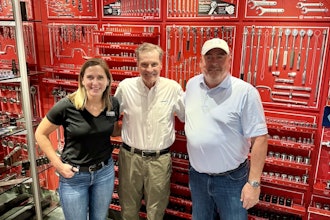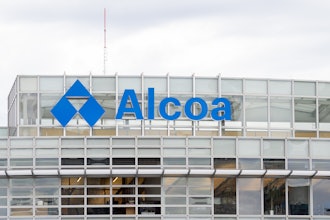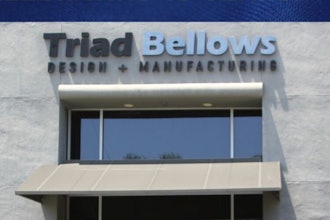
Lean warehouse teams are focused on continuous improvement and exceptional efficiencies. Many Lean warehouse teams start out with great intentions, implementing changes that improve processes and increase efficiency. But then, slowly over time, the newness wanes and they lose momentum. While this is not uncommon, it’s extremely important that managers take notice and take action. But how can leaders pump life back into a team that is losing momentum? How can a team leader provide positive reinforcement in order to revive the team?
To begin, there are some basic rules for successfully managing a team meeting that must be followed in a Lean warehouse for continuous improvement, sense of stability, and growth.
- Be totally honest. Team members should be encouraged to say what they think. A team member should not have to hold back or be concerned with “political” fallout from voicing an opinion.
- Offer total amnesty. There should be no repercussions brought upon the individual for statements or ideas brought forth in team meetings, so long as they’re presented in a respectful manner. The minutes of the meeting should not quote individuals, but rather, state ideas as team ideas.
- Listen to others. Team members should be encouraged to actively listen in order to remember new facts and pick up on feelings as well.
- Stay focused. Team members must stay focused during meetings and not stray from the agenda. Meetings sometimes uncover valuable information and ideas that do not relate to the current agenda; these ideas should be logged and saved for future opportunities.
- Manage time strategically. Team meetings should be limited to the allotted time, which should be not much longer than an hour. This will help the team stay focused and will contribute to a more organized meeting.
- Assign specific deadlines. Assignments should be made at the end of every meeting. Team members should be given the appropriate time to complete the assignments, and they should be held responsible for the completion of the assignments.
These team rules should boost morale and lead to more productivity, but it might take more to revamp your sluggish Lean warehouse team. This is where CPR comes into play.
Continuous Positive Reinforcement (CPR)
CPR may provide the solution to your team’s struggles. CPR is a goal-oriented management system that utilizes continuous positive reinforcement to achieve work team goals. The ABC model of CPR offers techniques to achieve this in your warehouse.
- Antecedent: An antecedent is a cue, prompt or reminder that helps the team or team member perform a specific behavior. This is an approach that is based on psychology. When we influence behavior before it occurs, we are using antecedents. Remember, if an antecedent gets a behavior started, it has done its job. A good example of an antecedent in a Lean warehouse is a television housed in a central location that lists stats on productivity in near real-time. If the stats are good, it will encourage employees to keep working hard; if it’s negative, they’ll know to pick up pace.
- Behavior: Take note of behaviors of employees. Determine what they’re doing, and how the team member is acting when he or she accomplishes something. You’ll want to be able to pinpoint specific behaviors when you’re dolling out consequences, both positive and negative.
- Consequence: Consequences are what happens to the team or a team member when a specific behavior—positive or negative—takes place. Consequences are the single most effective tool a team leader has for increasing team or team member performance. Not every behavior will warrant a consequence. Say for example someone is performing adequately on a regular basis; no consequence would likely be required then. Another tip, be sure to give out positive and negative consequences separately. Adding a “but” to the end of a positive comment can negate what the individual was doing that was good, and vice versa for bad. Below are some defined consequences:
Positive reinforcement: Positive reinforcement is anything that makes a team or team member feel good about a behavior. The positive reinforcement could be as follows:
- Recognition
- Special opportunities
- Awards
- Freedoms
Negative reinforcement: Negative reinforcement should typically be given to an individual in a private setting and can progress to more harsh reinforcements over time if behaviors don’t change. The negative reinforcement could be as follows:
- Criticism
- Working late
- Poor review
- Sense of disappointment
Punishment: Punishment is anything that makes a team or team member regret something they have done. Punishment could be as follows:
- Receiving criticism
- Denied privileges
- Increased controls
Extinction: Extinction is basically the practice of not giving a certain topic your time. Perhaps there is gossip amongst the team and an employee comes into your office to discuss a “he said, she said” incident. Letting that person know you have no interest in engaging in that topic, as it is not beneficial, is an example of extinction.
If you want the team or team members to perform up to expectations, then asking, demanding or expecting it will only bring short-term results. You must plan and deliver positive consequences when performance is done right the first time and in the long-term.
The following are great tips for dispensing CPR effectively:
- Provide positive reinforcement immediately. As soon as a behavior that you would like to enforce is observed, positive reinforcement should be provided. If the reinforcement is not provided immediately, the person you would like to reinforce may feel it is less sincere or that his or her hard work goes unnoticed.
- Always be specific. Describe in detail what you like about a team member’s work. A general comment like, “nice work” does not suffice. You should say something like, “John, the cost analysis that you performed was exactly what the team needed.”
- Personalize. Always make eye contact with the team member that you are addressing. Be aware that some people like to be recognized in front of a group and some don’t. Try to understand each of your team member’s likes and dislikes.
- Contact a team member’s direct supervisor. Write a positive note to a team member’s direct supervisor and copy the team member, or make sure that a direct supervisor is around when you compliment the team member.
- Celebrate! Don’t forget to celebrate significant team successes. The celebration could be lunch ordered in for the team.
Lean process improvement has proven to be invaluable in reducing waste. However, the long-term teaming approach can be difficult to manage. Teams sometimes lose focus after many months of activity, but CPR can help revive your team. CPR can be the vehicle that turns a sluggish Lean team into a high performance machine.
Steven (Jimmy) Benefield, a Partner at enVista, has more than 20 years of experience in supply chain consulting and project management specifically in manufacturing, transportation, distribution and third party operations. enVista delivers innovative solutions that improve profitability, enhance customer service and reduce waste from source to consumption. enVista’s unrivaled consulting experience, deep vertical industry expertise and comprehensive solutions portfolio, enable clients to leverage one strategic partner that consults, implements and operates across Supply Chain, Transportation, Retail, IT and ERP. For more information, visit http://www.envistacorp.com



